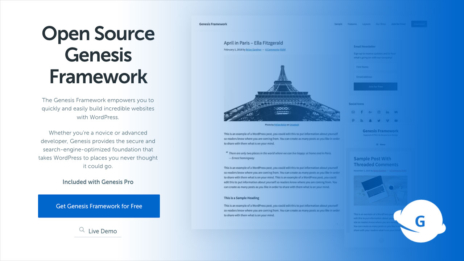![How to Do On Page SEO in WordPress in 5 Easy Steps [Checklist] On page SEO in Wordpress screenshot](https://www.upwardcreative.com/wp-content/uploads/2014/09/on-page-seo-wordpress.jpg)
Are you unsure how to do on page SEO to improve your websites search engine rankings?
Don’t worry, you are definitely not alone.
I’m going to show you exactly how I do on-page SEO in WordPress with this very article, as I write it. How meta!
When writing your next blog post or website page, you should keep the following on-page SEO checklist in mind. With only 5 factors or steps, it’s easy to remember.
Even though I’m using WordPress for this particular example, I should note that it’s possible to use these on-page SEO factors for any type of website, content management system (CMS) or shopping cart solution. Only the implementation details may very slightly depending on what platform or plugin your using.
If, for some reason, you’re unable to easily implement any one of these steps on your current website or CMS, perhaps it’s time to consider a WordPress website!
With that out the way, let’s get started and make sure you have the right tools for the job…
Table of Contents
Choosing a WordPress SEO Plugin
Rank Math is the free plugin I will use in this tutorial to demonstrate how to do on site SEO in WordPress…
The SEO concepts in this tutorial are relevant to any site or plugin. But Rank Math is by far the best SEO plugin available for WordPress, free or paid, and what I use and recommend you do too.
It offers many useful features that allow you to easily edit all 5 of the on-page SEO factors I will cover in a moment, plus many more you’d have to pay for with other plugins, including:
- Setup wizard
- Focus keyword and content analysis
- SEO analysis based on 40 factors
- XML sitemap
- Advanced schema structured data generator
- 404 monitor
- Instant indexing
- Link Counter
- Role manager
- SEO analysis
- Sitemap
- Google Analytics integration
- Social share reviews
And much, much more!
For the full list check out the Rank math features page.
Setup Your On-Page SEO Plugin in WordPress
Once Rank Math is installed, to setup the plugin:
- Click the Rank Math menu tab in the left hand side of the admin (as seen in the screenshot below):
- Click the Setup Wizard tab in the main main viewport
- Follow the Setup Wizard’s on screen instructions to setup the plugin.
![How to Do On Page SEO in WordPress in 5 Easy Steps [Checklist] Rank Math Setup Wizard tab.](https://www.upwardcreative.com/wp-content/uploads/2014/09/rank-math-setup-wizard-tab.jpg)
You can also use the Setup Wizard to easily migrate from other SEO plugins such migrate SEO Press, All In One SEO Pack and Yoast SEO.
It’s a very intuitive user interface and process but if you need any more help you can consult Rank Math’s excellent Knowledge Base for detailed instructions on how to migrate from other plugins or any other setup details you might need.
![How to Do On Page SEO in WordPress in 5 Easy Steps [Checklist] Rank Math Setup Wizard screen.](https://www.upwardcreative.com/wp-content/uploads/2014/09/rank-math-setup-wizard.jpg)
Now you have Rank Math install and the right on-site SEO tools for the job, lets move on to how to optimise your on-page SEO in WordPress using Rank Math…
5-Step On Page SEO Checklist
On-page SEO is the keyword phase that I’m optimising the article your reading now for.
With this in mind as an example, the first thing to do is…
1. Optimise the Slug
The slug is the part of the URL that comes at the very end and identifies a particular page on a website…
For example, the URL for this article is www.upwardcreative.com/blog/on-page-seo-wordpress/ so the slug for this page is simply on-page-seo-wordpress.
The step is alter the slug to include the keyword phrase your targeting and want to rank for in the search engines.
This makes the page readable to both:
- Humans
- Computers (i.e search engines)
It’s amazing how much of a positive impact applying the keyword phase to the slug can have on your SEO as well as act as a navigation aid and help improve user experience.
To alter the slug:
- Click “Post” in the sidebar of your page/posts admin page
- Find the “URL slug” section and edit the slug text underneath accordingly
![How to Do On Page SEO in WordPress in 5 Easy Steps [Checklist] How to optimise the page slug in WordPress](https://www.upwardcreative.com/wp-content/uploads/2014/09/optimise-slug-wordpress.jpg)
Warning: Never change your website page links once they’ve been published (without creating a 301 redirect). Doing so will cause broken page links and 404 errors for visitors and can negatively effect your search engine rankings. If you must change them, always create a 301 redirect from the old page slug to the new one to avoid errors and traffic loss.
2. Optimise the Main Body Copy
When creating your new page or post, make sure to include your target keyword in the main body of text. But only where it feels natural to do so.
If it doesn’t sound right, don’t shove your keyword in. Use variations of the keyword phrase by swapping around the word order or using synonyms.
Whatever you do don’t sacrifice you visitors reading experience for the sake of achieving, what you might feel are, extra SEO brownie points.
Be sure you air on the side of good user experience, not SEO. It’s great for your keyword to rank high. But if visitors can’t understand you message clearly and have a bad experience on your website then it will hurt your brand, and users will quickly leave and be less likely to return.
Simply slide your words in where they fit seamlessly into your post and Rank Math with give you a score on how well your page is optimised.
![How to Do On Page SEO in WordPress in 5 Easy Steps [Checklist] Optimising the body copy for SEO in WordPress with Rank Math](https://www.upwardcreative.com/wp-content/uploads/2014/09/optimise-body-copy-wordpress.jpg)
If it’s not possible to effortlessly tie your keyword phases into your post, it’s probably a signal that you should rethink your keyword.
The next step is too…
3. Optimise Your Images
The ALT attribute in the image metadata is what’s important here.
Make sure to include a description of the image in the ALT attribute. And do this for every single image on the page.
And for the main image of your page, be sure to include your target keyword.
People often go SEO crazy in regards to the ALT attribute. Your images do not need to be stuffed with keywords. When using the ALT attribute, simply describe what the image is. In the ever changing world of semantic search (where Google’s goal is determine the meanings of phrases and words through the context around them) this is becoming really important.
Semantic search seeks to improve search accuracy by understanding the searcher’s intent and the contextual meaning of terms to generate more relevant results.
Wikipedia
Also, make sure to give the file a name that correctly describes the image and includes your keyword.
![How to Do On Page SEO in WordPress in 5 Easy Steps [Checklist] Optimising the alt tag for SEO in WordPress](https://www.upwardcreative.com/wp-content/uploads/2014/09/optimise-alt-tag-wordpress.jpg)
Now, it’s time to move on to the biggest of the on page SEO elements and…
4. Optimise the Title Tag
The title tag is a crucial SEO element, but it is also an important element for user experience (UX).
On any search engine results page, your title tag is the text that jumps out at you most. It’s the most predominantly displayed text.
![How to Do On Page SEO in WordPress in 5 Easy Steps [Checklist] How the title tag appears in Google search](https://www.upwardcreative.com/wp-content/uploads/2014/09/title-tag-display-google.png)
Your title tag is most effective when it can be easily read.
Follow this rule. The nearer your target keyword is to the front of your title tag, the bigger the impact it will have on your SEO. But don’t stress out about it! Most importantly, make sure your keyword phrase is in your title tag. If it fits in early in the title, great, go with it. If not, then move on.
You’ll be editing your title tag with the Rank Math plugin. The Rank Math plugin provides a nice preview of how your title tag will appear in Google search results.
To edit the page title and view the preview:
- Click the Rank Math button in the very top right of the admin page
- Under the Preview section and click the page title name
- In the popup that appears enter your title in the input box to view the preview update in real time
- When you’re finished, click the “X” or out side the popup to close it
![How to Do On Page SEO in WordPress in 5 Easy Steps [Checklist] How to optimise the page title for SEO in WordPress with Rank Math](https://www.upwardcreative.com/wp-content/uploads/2014/09/optimise-title-tag-wordpress.jpg)
Finally, it’s time for the last on-page SEO element…
5. Optimise the Meta Description
Okay, let me clarify. The meta description isn’t technically a SEO element and optimising it wont increase your ranking.
But it’s helpful for conversion and user experience reasons.
Most of the time the meta description for web pages is very prominent in the Google search results. And is read by the majority of people when deciding on what pages to click on.
So if you make sure your meta description is well optimised it will not only help your site to get more traffic but also capture and convert more visitors into customers.
![How to Do On Page SEO in WordPress in 5 Easy Steps [Checklist] How the meta description appears in Google search](https://www.upwardcreative.com/wp-content/uploads/2014/09/meta-description-display-google.jpg)
You can optimise the meta description in the same popup Rank Math window as used for the page title, following the same instructions on how to optimise the page title above. And again, like the page title, you’ll also get the handy preview so you can see how the of the meta description will appear in Google.
![How to Do On Page SEO in WordPress in 5 Easy Steps [Checklist] Optimising the meta description in WordPress with Rank Math](https://www.upwardcreative.com/wp-content/uploads/2014/09/optimise-meta-description-wordpress.jpg)
In additional, the meta description is frequently “pulled” by social sharing plugins and used as the default descriptive text when a post is shared on social media platforms (assuming you have the correct meta tags added to your page code using a plugin such as Novashare).
And with Rank Math, if you wish, you can also change the social share description so it unique to the one pulled from the meta description by default.
To update the social share description in Rank Math so it’s different to the meta description, simply:
- Click on the Social tab in the Rank Math sidebar area
- Click Edit Snippet
- Update your social share description snippet accordingly
![How to Do On Page SEO in WordPress in 5 Easy Steps [Checklist] Optimising the social description in WordPress with Rank Math](https://www.upwardcreative.com/wp-content/uploads/2014/09/optimise-social-description-wordpress.jpg)
Again, Rank Math provides a handy social media share preview.
Here is how the Rank Math social share preview looks for this blog post…
![How to Do On Page SEO in WordPress in 5 Easy Steps [Checklist] Rank Math preview of social media share](https://www.upwardcreative.com/wp-content/uploads/2014/09/social-media-preview-rank-math.jpg)
Wrapping Up
On-page SEO isn’t some kind of black magic and it doesn’t have to be difficult.
But what do you think? Did this tutorial help make your on site SEO easy? Do you use Rank Math for on site SEO also? How do you find it?
Reach out to me on Twitter to let me know or get in contact here if you need help from my freelance design services.


